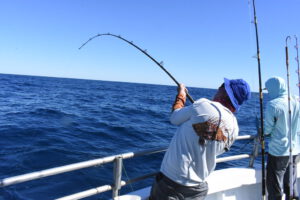
The sail – The match race
Sailing is an extraordinarily complex sport, which often evokes images of nature, freedom, adventure, courage, friendship, passion … constantly stimulating our imagination. It can be experienced in many ways, with family and friends, with oneself, in competition, on a cruise or simply on a sailed Sunday. When we talk about competition, the Match Race is certainly the most compelling discipline and it is essentially simple: you have two boats at a time- identical to one another- compete in a duel, with only one opponent to be defeated at a time!
In any race the important thing is to win, in a match race it is to win by defeating the other boat.
The level of coolness and lucidity in the moves to make while controlling the opponent and leading the boat are the ingredients that make one team win
over the other. In a match race the basic principle is to block the opponent’s moves, marking him and trying to always position oneself between the opponent and the mark. If you are behind, you must apply a different strategy to recover and overtake, often trying to induce the opponent into making mistakes.
There are many characteristics required to be successful, but the real difference is the individual role of each team member: – Sensitivity of the helmsman in immediately becoming familiar with the vehicle (the boats are in fact drawn and rotated continuously)
– Tactical strategy and ingenuity
– Skillful and scottista skills in the setup of the sails
– Coordination and speed of the drizzista in hoisted and lowered
– Agility of the bowman in maneuvers
For each individual role we must add the harmony and the synchrony of
working together, an effective communication with short but clear messages
and last but not least an accurate knowledge of the rules by the whole crew.
The duels, in this discipline, are very tight and hence some maneuvers are
not called vocally but rather communicated with a simple glance to speed up
reaction time.
This is why the selection of the crew is made based on the role to play on
board, weight, availability, character and above all … teamwork capabilities!
We enter the real REGATTA and we go to see the basic rules of the Match
Race:
THE DEPARTURE
The Regatta Committee exposes the flags accompanying the operation with
sound signals.
The first will be the warning signal: 7 minutes before the first departure
7 Warning or Class Warning Display
6 Attention or class signal output
5 Exposure Warning Signal of the numeric panel of the 1st Match to follow the other matches
4 Exposure Preparatory signal corresponding to the letter P
0 Reminder of the Warning Signal and Preparatory Signal
At the preparatory signal the boats must be outside the end assigned to them.
The boats are identified with two flags on the stern; the blue flag boat enters
the starting area on the left and on the side of the buoy.
The other with the yellow flag must enter the starboard tack and the side of
the committee boat.
wind direction
At the 4-minute signal, the boats must cross and release the starting line from the direction of the side of the route to that of pre-departure.
At the starting signal the boats will have to be behind the line otherwise a penalty will be assigned and the boat will have to return completely behind the line before leaving.
When they enter the starting line, the Yellow has the initial advantage because it is the boat with starboard tack. He will try to stop the Blue from entering the line and try to trap her on the left from which it is difficult to escape.
Both teams will try to control the other boat, to make sure that the opponent breaks a rule and incurs into a penalty, to jeopardize the opponent’s departure so that the time-gap at the start is as large as possible. Obviously, each team will also try to have a good start on the favored side and on the right walls, free to go to the advantage side of the bowline.
“Dial up“
This is a typical pre-start maneuver, both boats enter the pre-start area, sailing on a collision course and then heading to the wind and preparing for
the duel. The confrontation will be won by the crew that is able to maintain control of the boat even at reduced or steady speed.
REFEREES FLAGS AND PENALTY
A boat with the referee follows the two boats, observes if the boats are engaged, if they respect the rules, and inflicts penalties when appropriate.
It also judges if a penalty has been executed correctly.
When one boat believes that the other has broken a rule, it exposes the “Y” flag of Protesta The referees then make a decision and signal it with the display of a flag:
No penalty/Penalty to the boat i.e.
Yellow or Blue Red Flag – and the penalty must be completed immediately.
The Black Flag disqualifies the boat and grants the match to the opponent.
The penalty is to make a 270 ° turn. If the penalty is carried out on the upwind side, it is necessary to make a jibe and a turn and to re-establish in a close-hauled course; if on one side of the stern, you must tack, jibe, and rest up to a broken stern. The boat with the penalty may try to engage the other boat and lead it to break a rule with the result that the penalties will both be canceled. Once all have arrived, the Regatta Committee exhibits a flag with the color of the winning boat.
THE ROUTE:
Unlike in the fleet regattas, a Match Race regatta has a different course, and indeed the buoys must be left to starboard. The regatta can be divided into three phases: the pre-start (four minutes preceding the signal of the start) where the duel is tightened and binds the first bowline (the stretch
from the start to the first mark) dedicated above all to strategy and race tactics to conquer the leadership (from the first mark to the finish line) and
finally absolute control over the opponent.
We hope we have at least in part involved you in this discipline, and we will answer with great pleasure to any further curiosity or information.
Good wind to all!



